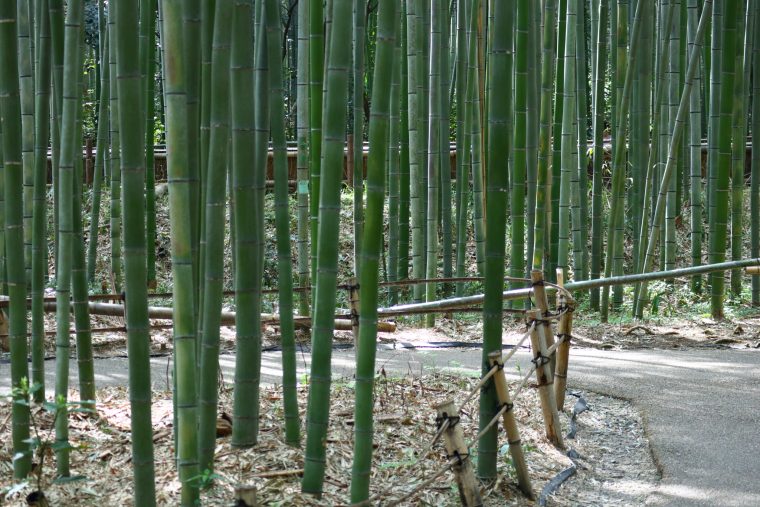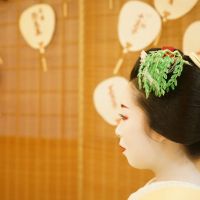Arashiyama Bamboo Grove: Embracing Nature’s Symphony in Kyoto
S-fleage
S-fleage is a Kyoto-based company. We are proud to introduce the charms of Kyoto to the world. We hope this article will help you to experience Kyoto.
Latest posts by S-fleage (see all)
Contents
- Introduction
- Historical Roots of arashiyama bamboo grove
- Cultural Harmony
- Exploring the Bamboo Wonderland
- Seasonal Transformations
- How to get to arashiyama bamboo grove
- Basic Information and Tips of arashiyama bamboo grove
- My experience of arashiyama bamboo grove
- Arashiyama’s Bamboo Symphony: A Stroll Through Kyoto’s Serenity
Introduction
Arashiyama Bamboo Grove, nestled in the western outskirts of Kyoto, Japan, is a serene haven that captivates the hearts of visitors with its enchanting beauty.
Spread across the Arashiyama district, this bamboo forest is not merely a collection of tall stalks; it’s a living, breathing testament to the harmonious relationship between nature and culture.
Historical Roots of arashiyama bamboo grove
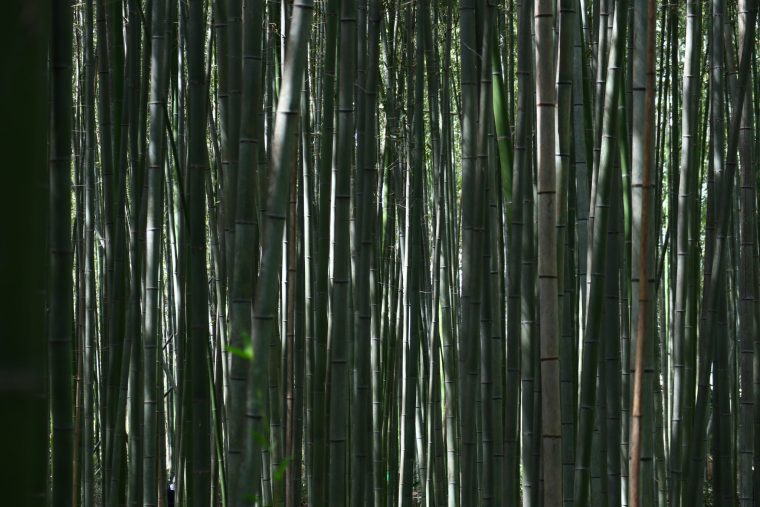
The Arashiyama Bamboo Grove stands tall as a testament to Japan’s rich cultural history and the enduring harmony between nature and civilization.
This enchanting bamboo forest, a mesmerizing labyrinth of towering green stalks, has deep historical roots that echo through the centuries.
Historical Background of Arashiyama
Arashiyama’s story begins with the Heian Period (794-1185), an era synonymous with the flourishing arts and the emergence of Kyoto as the imperial capital.
Initially cultivated for practical purposes, bamboo became an integral part of daily life, utilized in construction, craft, and even as a writing medium.
Over time, this utilitarian plant found its way into the spiritual realm, symbolizing resilience and flexibility in the face of adversity.
During the Edo Period (1603-1868), Arashiyama’s bamboo grove gained prominence as a place of spiritual retreat.
Zen Buddhist monks sought solace in the rustling bamboo leaves, using the serene environment for meditation and reflection.
The rhythmic sounds of the bamboo swaying in the wind became a natural symphony, inviting practitioners to connect with nature’s tranquility.
Origins and Evolution of the Bamboo Grove
Arashiyama’s iconic bamboo grove, a symbol of natural beauty, boasts a rich history and fascinating evolution.
The origins of this enchanting landscape can be traced back centuries. Initially, it served as a protective barrier against riverbank erosion and landslides, showcasing the intricate relationship between humans and nature.
Over time, Arashiyama’s bamboo grove became a spiritual retreat, influencing the region’s cultural and religious practices.
Embraced by Zen Buddhist philosophy, the rustling bamboo leaves were believed to whisper ancient wisdom, fostering a tranquil atmosphere for meditation.
In the modern era, Arashiyama’s bamboo grove has evolved into a globally recognized tourist attraction.
Its popularity soared after being featured in various films and literature, attracting visitors from around the world.
Cultural Harmony

Arashiyama’s bamboo grove not only captivates with its natural beauty but also embodies cultural harmony.
The bamboo grove’s influence extends to various art forms, creating a cultural symphony that resonates with Kyoto’s historical roots.
Visitors, immersed in this harmonious blend of nature and culture, experience the profound essence of Kyoto’s cultural heritage within the enchanting embrace of the Arashiyama Bamboo Grove.
Tenryu-ji Temple
Established in the 14th century, Tenryu-ji Temple, a UNESCO World Heritage Site, welcomes visitors with Zen gardens and historic charm.
Adjacent to the temple lies the enchanting Arashiyama Bamboo Grove, where towering bamboo creates a mesmerizing atmosphere.
Stroll along well-maintained paths under the bamboo canopy, experiencing the rhythmic dance of leaves and the tranquility of this natural wonder.
Influence of Bamboo Grove on Literature and Arts
Arashiyama’s bamboo grove has long served as an inspiration for literature and the arts.
Its tranquil ambiance and fleeting beauty captivate poets and artists alike.
Throughout Arashiyama, stone monuments bearing poems from the classical anthology “Hyakunin Isshu” are scattered.
Additionally, the bamboo grove features prominently in traditional Japanese performing arts such as “Noh.”
Exploring the Bamboo Wonderland
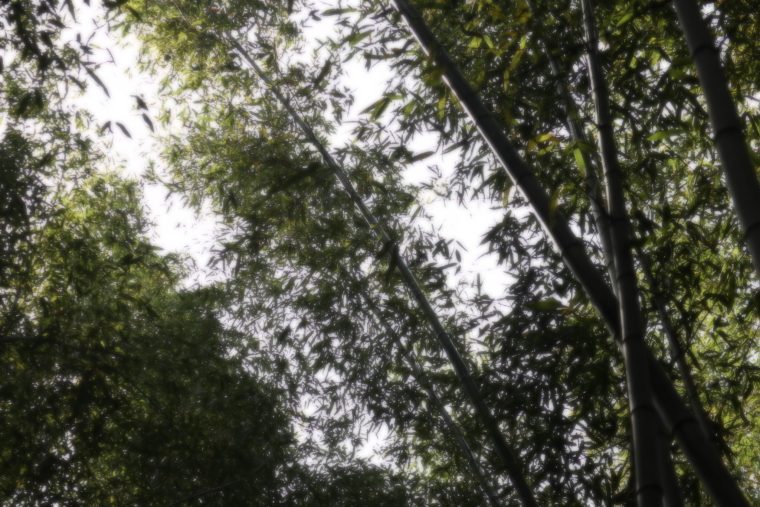
Embarking on a journey through Arashiyama’s Bamboo Grove is akin to stepping into a mesmerizing bamboo wonderland.
Towering bamboo stalks create a natural labyrinth, guiding visitors through enchanting pathways.
Dense Green Tunnels of Bamboo

Towering bamboo shoots create a dense, immersive canopy, filtering sunlight to cast a captivating interplay of light and shadow.
The symphony of rustling bamboo leaves harmonizes with birdsong, creating an immersive auditory experience.
These lush tunnels, a testament to Kyoto’s natural allure, provide a serene escape.
Traditional Bamboo Crafts and Workshops
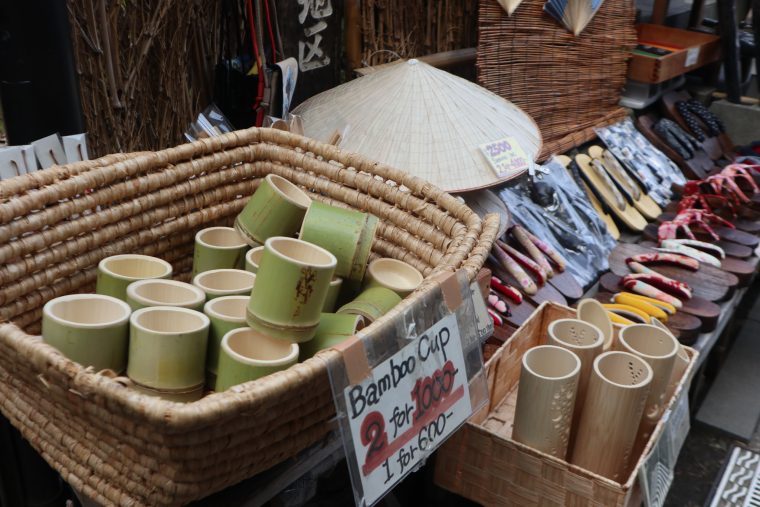
Local artisans showcase centuries-old techniques, crafting intricate bamboo creations.
Join a hands-on workshop to learn the delicate skill of bamboo weaving, creating your unique masterpiece.
Please refer to this detailed information.
↓
https://www.takenomise.com/en/experience/
Sightseeing spots around arashiyama bamboo grove
Surrounding Arashiyama, a plethora of captivating attractions awaits.
Let me introduce a few to enrich your travel itinerary.
These spots contribute to a well-rounded experience, complementing the natural and cultural wonders of Kyoto’s Arashiyama Bamboo Grove.
Tram Train
Discover the beauty of Kyoto’s Arashiyama region aboard the Sagano Torokko Train.
This charming open-air train, also known as a “truck train,” takes passengers on a leisurely journey through lush landscapes and alongside the serene Hozugawa River.
A highlight of the journey is the famous Sagano Bamboo Grove, where passengers can witness the mesmerizing sway of towering bamboo stalks.
The rhythmic sound of the train wheels on the tracks and the natural symphony of the environment create a tranquil experience.
Perfect for solo travelers, couples, or families, the Sagano Torokko Train provides a nostalgic and delightful way to immerse yourself in the scenic beauty of Kyoto’s countryside.
Arashiyama Monkey Park
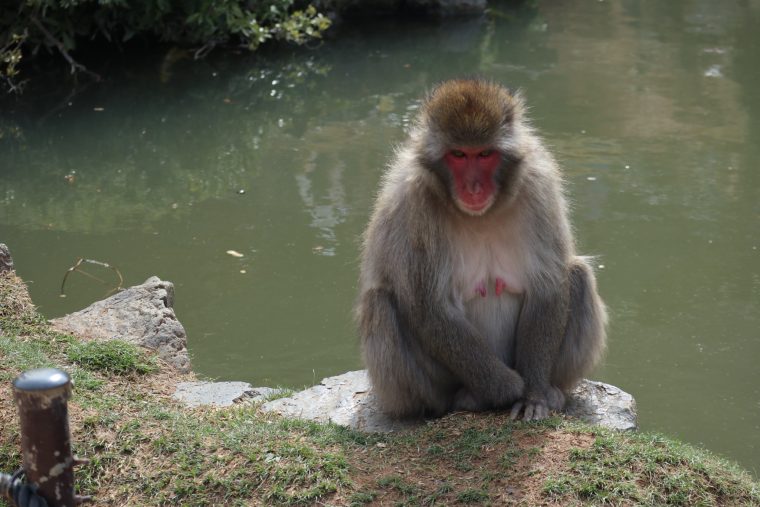
Nestled in the scenic Arashiyama region, the Arashiyama Monkey Park offers a unique and enchanting wildlife experience.
Situated on Mount Iwata, the park provides panoramic views of Kyoto.
Visitors can observe Japanese macaques, also known as snow monkeys, in their natural habitat, roaming freely amidst lush surroundings.
A short hike leads to the park’s summit, where an observation deck allows for breathtaking vistas.
Hozugawakudari River Boat Ride
Embark on a tranquil journey along Kyoto’s Hozugawa River with the Hozugawa River Cruise.
This serene boat ride takes you through the heart of nature, offering a peaceful escape surrounded by lush greenery and scenic landscapes.
Launching from the charming Kameoka City, the cruise gracefully meanders downstream, providing passengers with picturesque views of the riverbanks and the changing seasons.
The Hozugawa River, known for its gentle currents, offers a smooth and relaxing voyage for visitors of all ages.
As you drift along the river, immerse yourself in the natural beauty of the Arashiyama region.
Togetsu-kyo Bridge
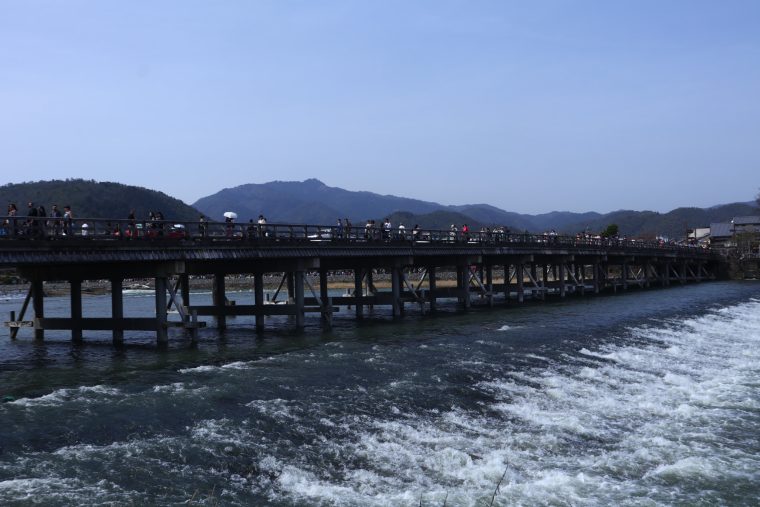
Discover the timeless beauty of Kyoto’s Arashiyama district by crossing the iconic Togetsukyo Bridge.
Spanning the Hozugawa River, this picturesque bridge is a symbol of tranquility and natural splendor.
Togetsukyo, which translates to “Moon Crossing,” offers breathtaking views of the surrounding mountains, especially during the cherry blossom and autumn foliage seasons.
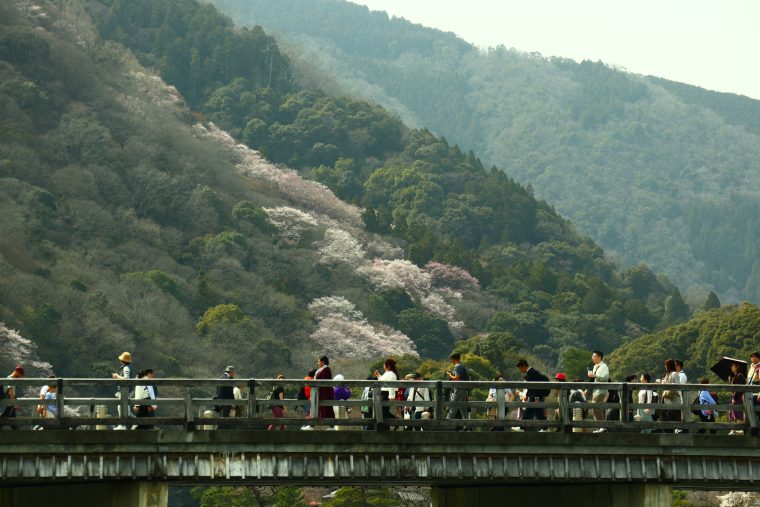
The bridge serves as a gateway to the Arashiyama Bamboo Grove and the Iwatayama Monkey Park, making it a central point for exploring the wonders of this enchanting region.
If you want to get much more about Arashiyama, check this out
↓
Seasonal Transformations
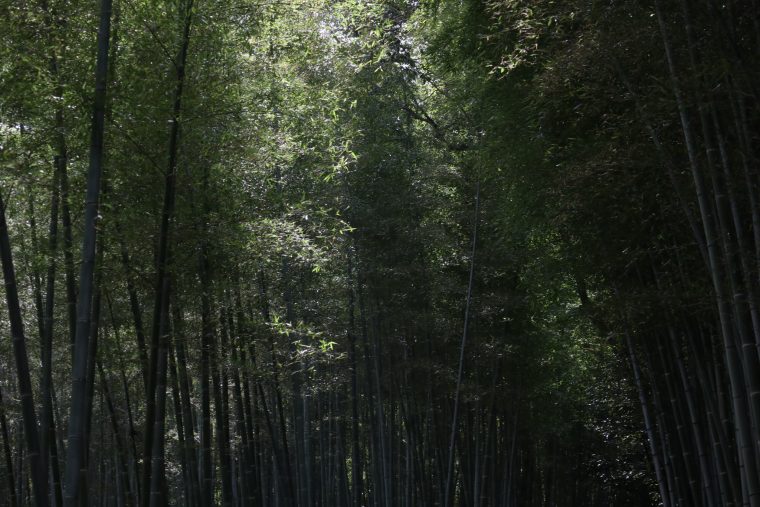
In Arashiyama’s bamboo grove, you can enjoy different landscapes with each season.
A particularly enchanting moment to experience is during sunset when the sunlight filters through the bamboo, creating a mystical atmosphere.
Arrival of Spring and Cherry Blossoms
In spring, as bamboo enters its breeding season, the leaves of some shoots turn a slight shade of red, providing nutrients to the emerging bamboo shoots (known as “Takenoko”).
Enjoy the unique sight of bamboo during spring, showcasing a phenomenon exclusive to this season.
Summer Greenery and Refreshing Atmosphere
In summer, the bamboo takes on a lush, vibrant green hue.
Despite the intense heat, stepping into this bamboo grove instantly provides a refreshing coolness, offering a pleasant escape from the sweltering sun.
Autumn Foliage and Harmony with Bamboo
In autumn, the wind sweeping through the garden rustles the bamboo leaves, creating a soothing sound reminiscent of a gentle “swish, swish,” as they dance in the breeze.
Winter Silence and Snowy Landscapes
In winter, the bamboo grove is occasionally blanketed in snow, offering a picturesque sight of snow-draped serenity.
Particularly in the early morning, the ambiance is profoundly quiet and peaceful, providing a tranquil atmosphere for reflection and enjoyment.
How to get to arashiyama bamboo grove
Here’s a comprehensive guide on reaching this natural wonder from Kyoto Station!
From Kansai international airport to Kyoto station
Navigating from Kansai International Airport to Kyoto Station offers various convenient options, allowing you to choose the mode of transportation that suits your preferences.
Airport Express Train (Haruka)
Purchase Tickets: Upon arrival at Kansai International Airport, head to the JR West Ticket Office to purchase tickets for the Haruka Airport Express Train bound for Kyoto.
Boarding the Haruka Train: Follow the signs to the Haruka train platform. The Haruka train departs directly from the airport and offers a comfortable and scenic journey to Kyoto Station.
Travel Time: The travel time on the Haruka train is approximately 75-80 minutes, providing ample time to relax and enjoy the picturesque views.
Airport Limousine Bus
Bus Terminal Location: Locate the Airport Limousine Bus Terminal at Kansai International Airport. It is on the first floor.
Purchase Tickets: Purchase your bus ticket to Kyoto Station at the terminal counter. Boarding the Bus: Board the Airport Limousine Bus bound for Kyoto Station.
Travel Time: The bus journey takes around 90-120 minutes, depending on traffic conditions.
Taxis and Rental Cars
Taxi Services: Taxis are available at the airport, providing a convenient but pricier option. Inform the driver of your destination, Kyoto Station.
Rental Cars
Rental car services are also available at Kansai International Airport if you prefer the flexibility of driving.
From Shin-Osaka station to Kyoto station
o travel from Shin-Osaka station to Kyoto station, you can take the JR (Japan Railways) Tokaido Shinkansen. The Tokaido Shinkansen is a high-speed train that connects major cities in Japan.
First, go to Shin-Osaka station and locate the Shinkansen platforms. Shin-Osaka is a major transportation hub, and you can easily find signs directing you to the Shinkansen area.
Purchase a Shinkansen ticket for the Hikari or Kodama train bound for Kyoto at the ticket counters or vending machines. Make sure to check the departure time and platform information.
Then proceed to the designated Shinkansen platform. Look for the train with the appropriate departure time and destination (Kyoto).
Enjoy the high-speed journey to Kyoto station. The travel time is relatively short (about 15-30min), and the Shinkansen provides a comfortable and efficient way to reach Kyoto.
From Kyoto station to arashiyama bamboo grove
Here’s a comprehensive guide on reaching this natural wonder from Kyoto Station.
Bus
Utilize Kyoto buses or Kyoto City buses to take a bus heading towards Arashiyama from Kyoto Station.
The ride takes approximately 40-50 minutes.
While there are multiple bus stops, the one closest to the bamboo grove is the Kyoto Bus stop named “Arashiyama-Tenryu-ji mae” .
Train
From Kyoto Station, take the Sagano (San’in) Line for approximately 15 minutes and alight at “Arashiyama” station.
It’s about a 10-minute walk from the station to the entrance of the bamboo grove.
Taxi
The taxi fare from Kyoto Station to Arashiyama is approximately 5,000 yen.
While this may seem higher compared to trains or buses, utilizing taxi apps allows for coupon usage, potentially reducing the fare significantly.
Basic Information and Tips of arashiyama bamboo grove
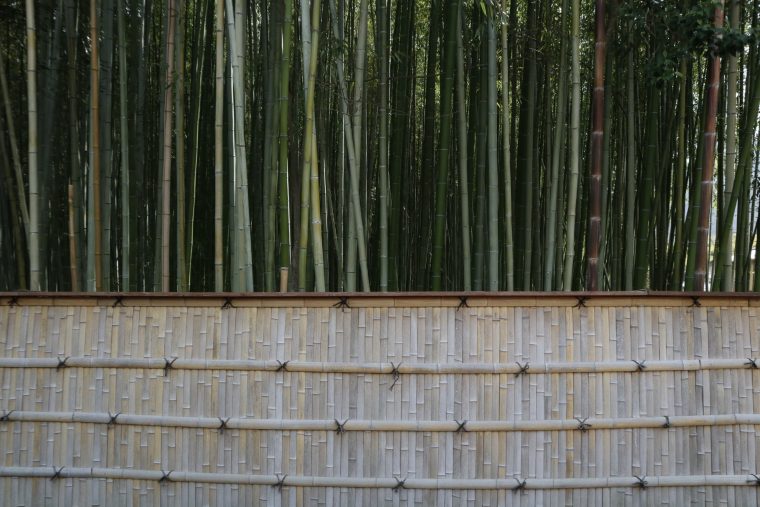
The bamboo grove in Arashiyama is not a facility with restricted access, and, except for certain areas, it is not governed by set operating hours or open-close schedules.
Visitors are free to enter at any time, and the grove is accessible 24 hours a day.
The recommended duration for a leisurely stroll is approximately 30 minutes.
Arashiyama bamboo grove is a highly popular tourist destination, so it can get very crowded during the peak season. Especially from late March to mid-April, it is filled with tourists.
During busy periods, it can be challenging to catch a bus or hail a taxi to visit Arashiyama bamboo grove. In such cases, it is recommended to use a taxi-hailing app to personally call for a taxi.
My experience of arashiyama bamboo grove
I often visit Arashiyama, but during the cherry blossom season from late March to April, it gets extremely crowded.
Not only Japanese locals but also many international tourists flock to the area.
The bamboo grove path is easy to navigate, but there’s a risk of getting separated from your companions due to the crowds.
Additionally, there are limited seating areas. Make sure to check the locations of the restrooms in advance.
If you want to know the current conditions in Arashiyama, check the live camera feed.
↓
Arashiyama’s Bamboo Symphony: A Stroll Through Kyoto’s Serenity
The charm of “Arashiyama” lies in its beautiful bamboo groves and natural landscapes that showcase different colors throughout the four seasons, as well as its buildings that tell a deep and lengthy history.
Explore the introduced tourist spots in “Arashiyama” and immerse yourself in the natural scenery with a traditional Japanese atmosphere while touching upon Japanese culture and history.

